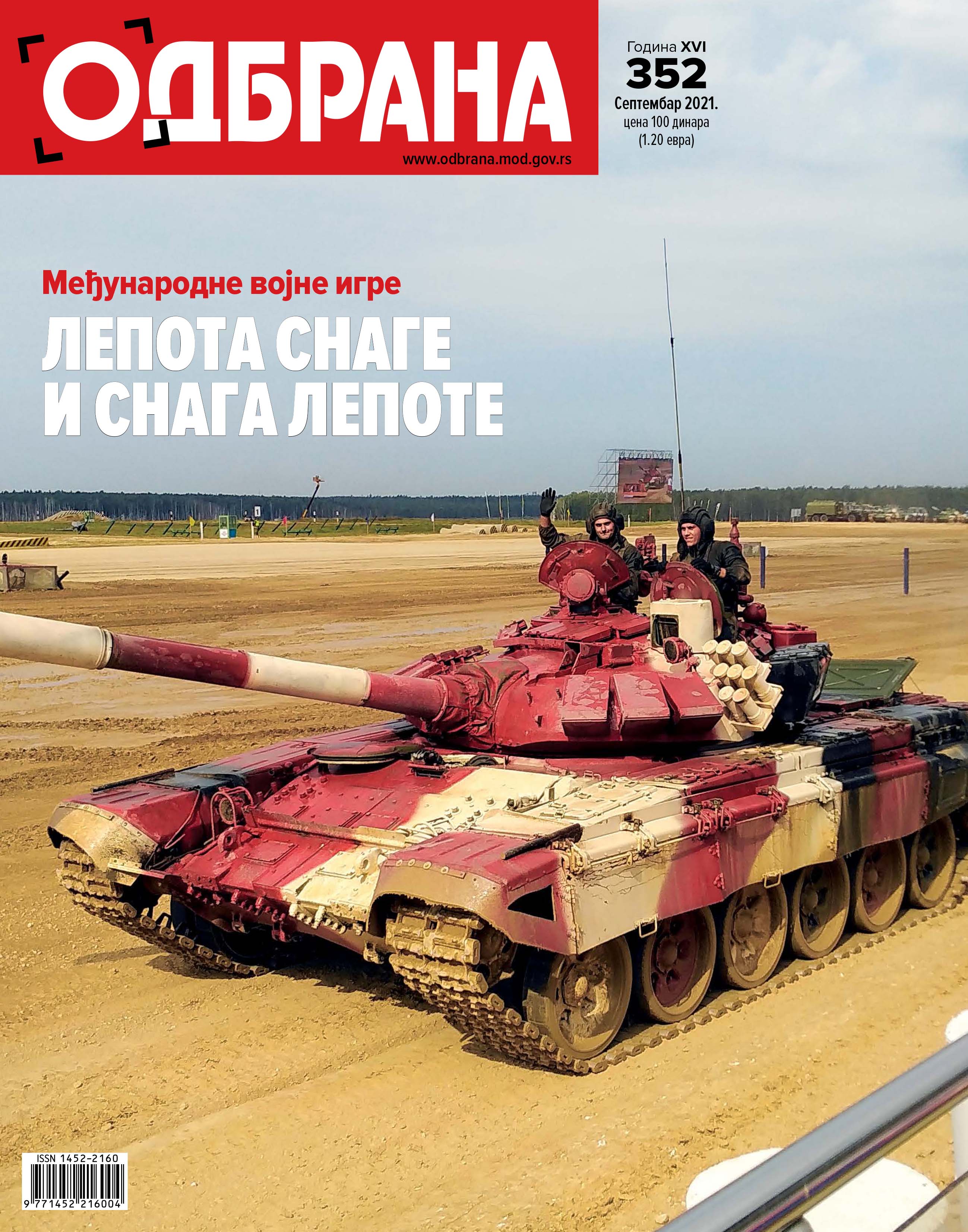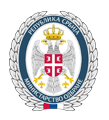02.09.2021.
New issue of "ODBRANA"
We have prepared a lot of interesting topics for the September issue of "Odbrana" magazine. Our journalists and photo reporters are on the spot in the Russian Federation and are reporting from the 7th International Army Games. They follow the participation of our tankers in the "Tank Biathlon" competition, report on the successes of our drivers at the "Military Rally" and the representatives of the Ministry of Defence at the "Army of Culture" competition, organized by the Public Relations Department. One of the 34 disciplines at the unofficial world military Olympics - the military police competition entitled "Guardian of Order" - is being held in our country for the first time and members of the Serbian Armed Forces are participating in it for the first time.
The Standing Point section is dedicated to the Total Defence concept as a deterrence strategy against the enemy. This concept includes a whole-of-society readiness and determination to counter military aggression and other security challenges. Amidst the increasingly turbulent geopolitical circumstances, several states have returned to the Total Defence concept as a model for strengthening national security. The most obvious example of the steps taken to implement Total Defence is the reintroduction of military service in Lithuania and Sweden.
 While preparing the System section, we visited the Mixed Artillery Brigade to see what its members are doing now, after a whole year filled with exercises, we watched the fourth-year Military Academy cadets (Air Force study programme) perform night flying with "lasta" aircraft as part of their flight training in the 252nd Training Squadron. We write about Army units providing assistance to the draught-affected residents of the Nišava, Moravica, Zlatibor and Kolubara districts. We also paid attention to the fire-fighting exercise conducted in one of the storage facilities of the Central Logistics Base at the beginning of August.
While preparing the System section, we visited the Mixed Artillery Brigade to see what its members are doing now, after a whole year filled with exercises, we watched the fourth-year Military Academy cadets (Air Force study programme) perform night flying with "lasta" aircraft as part of their flight training in the 252nd Training Squadron. We write about Army units providing assistance to the draught-affected residents of the Nišava, Moravica, Zlatibor and Kolubara districts. We also paid attention to the fire-fighting exercise conducted in one of the storage facilities of the Central Logistics Base at the beginning of August.The series about the Serbian military training grounds contains an interesting story about the "Beranovac" military complex, an autodrome like no other in Serbia. For decades, excellent instructors and drivers have been created there, many of whom have won gold and silver medals at military competitions at home and abroad, and some of them have won silver and bronze medals at the Military Rally in the Russian Federation.
The Global section contains the stories by our associates about airborne units of the world, units that were created throughout the world after the successful use of aviation in the First World War. The story of the geopolitical situation in the Eastern Mediterranean, where different religions, ideologies, nationalisms and ambitions are in constant conflict is also interesting. Bearing in mind that the current geopolitical situation is characterized by the greatest redistribution of power since the Cold War, antagonism in the field of energy again raises the question of "who will have the keys to warm seas", and all indicators point to geohistorical changes in the Eastern Mediterranean.
The text entitled "The Drava Does Not Surrender" published in the Culture section talks about the heroism of Aleksandar Berić, the commander of the "Drava" river monitor at the beginning of the Second World War. The shooting of a feature-documentary film of the same name, which shows the fight of that ship and its commander in defence of the homeland, has been completed.
The History section contains an article about Russian heritage in the Belgrade’s Military Museum and the Sports section covers the Serbian military sports team’s great success at the Tokyo Olympics - Jovana Preković won gold medal in karate and Tijana Bogdanović won bronze in taekwondo.
A special 24-page supplement is particularly interesting - "Kajmakčalan, September 1916". The author recounts the day-to-day events of the battle, which lasted from September 12 to October 3. After the seizure of Kajmakčalan, Serbian soldiers set foot on the soil of their homeland and were no longer exiles. Freedom was paid dearly. During the three months of fighting in 1916, 1,037 officers were killed, wounded and injured, and 31 went missing. 32,381 non-commissioned officers, corporals and privates were killed, wounded, injured and missing.

